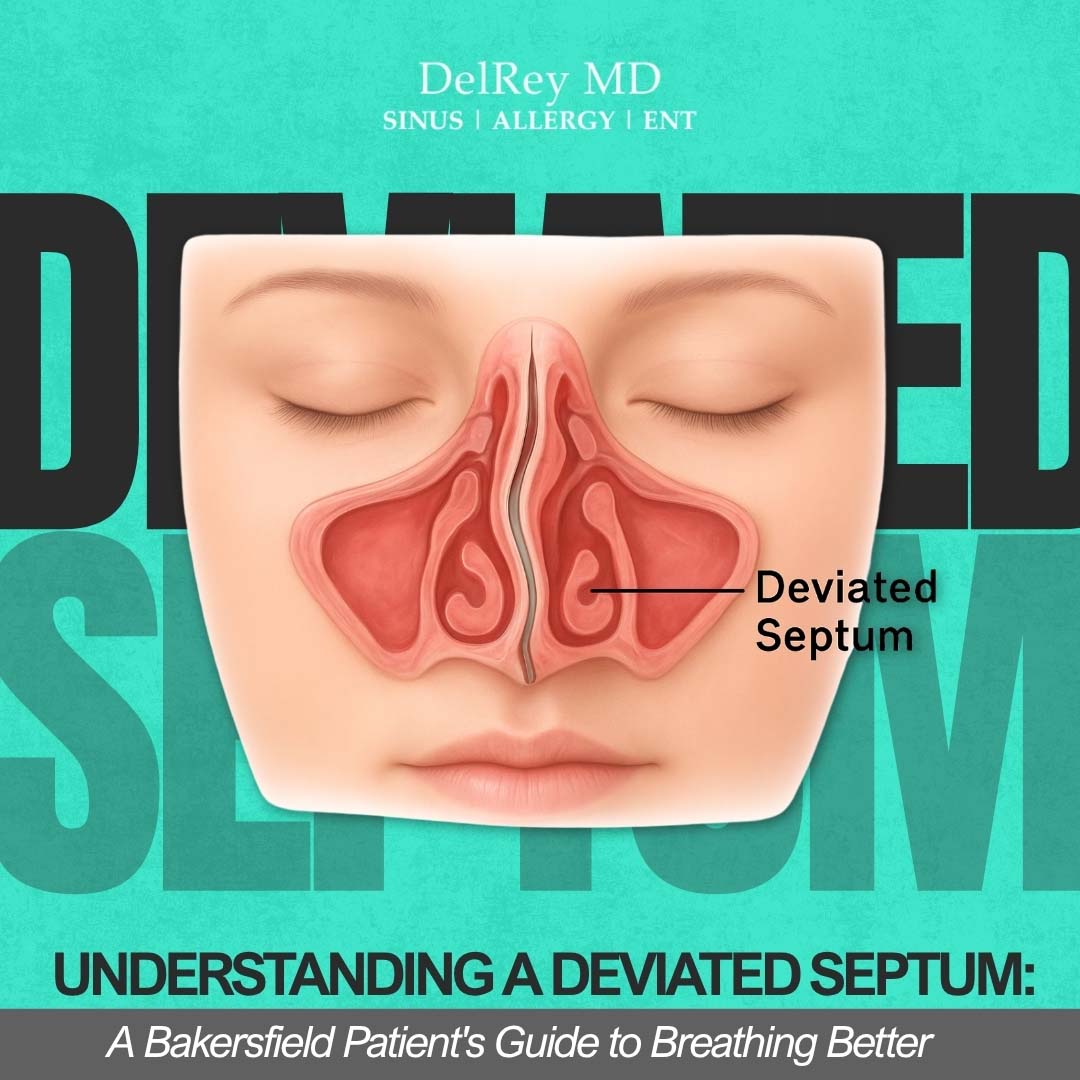
Nasal congestion is one of the most common concerns among residents in Bakersfield, Rosedale, and nearby Central Valley communities. For some, it’s more than a passing nuisance — chronic nasal blockage can make daily activities, rest, and overall comfort more difficult.
If your congestion and sinus pressure don’t improve with typical treatments, there may be a structural issue inside your nose. One common cause is a deviated septum — a condition where the nasal passage is uneven, making it harder to breathe.
The nasal septum is the thin wall of bone and cartilage that divides your nasal passages. Ideally, it should sit centered, creating two equal airways. A deviated septum occurs when this wall leans or curves to one side, narrowing one nasal passage.
It’s actually quite common — an estimated 80% of people have some deviation, though many never notice symptoms.
⚠️ Common Symptoms
When a deviated septum is more pronounced, it can cause noticeable symptoms such as:
- Persistent nasal congestion (often worse on one side)
- Difficulty breathing through the nose
- Facial pain or pressure
- Frequent headaches
- Snoring or noisy breathing
- Recurring sinus infections
- Occasional nosebleeds
- Reduced sense of smell
🧬 Causes of a Deviated Septum
A deviated septum can be present at birth or develop later in life. Common causes include:
- Normal variation during fetal development
- Injury during childbirth
- Nasal trauma from accidents or contact sports
- Structural changes during childhood growth
🩹 Possible Complications
In more severe cases, a deviated septum can contribute to:
- Chronic sinus infections due to poor drainage
- Sleep disturbances or sleep apnea
- Frequent ear infections (especially in children)
- Ongoing mouth breathing that can cause throat dryness and fatigue
🩺 How It’s Diagnosed
Your ENT specialist will examine your nose with a small handheld tool called a nasal speculum. In some cases, they may recommend:
- A nasal endoscopy to view deeper nasal structures
- A CT scan to evaluate sinus anatomy and airflow
These tests help confirm whether the deviation is causing your breathing issues or if another condition is involved.
💊 Treatment Options for a Deviated Septum
Mild cases may not need surgery and can often be managed with medications such as:
- Nasal steroid sprays to reduce inflammation
- Antihistamines for allergy-related congestion
- Decongestants to open nasal passages
- Saline rinses to keep the sinuses clean and moist
If these treatments don’t bring relief, your ENT may discuss septoplasty — a procedure to straighten the nasal septum and improve airflow.
🩻 Septoplasty: Improving Nasal Airflow
Septoplasty is an outpatient procedure performed under anesthesia to correct the position of the septum. During the surgery, your ENT carefully adjusts or removes small sections of bone and cartilage to create a more open, balanced airway.
Most patients go home the same day and recover within one to two weeks. While results vary, many people experience significant improvement in breathing and sinus comfort.
🏥 Trusted ENT Care in Bakersfield
At Del Rey MD, we provide personalized diagnosis and treatment for nasal and sinus conditions, including deviated septum evaluation and septoplasty. Our goal is to help Bakersfield-area patients breathe more comfortably and enjoy lasting relief through safe, effective care.
👉 Schedule a consultation with Del Rey MD in Bakersfield today to explore treatment options that may help you breathe easier and live more comfortably.

